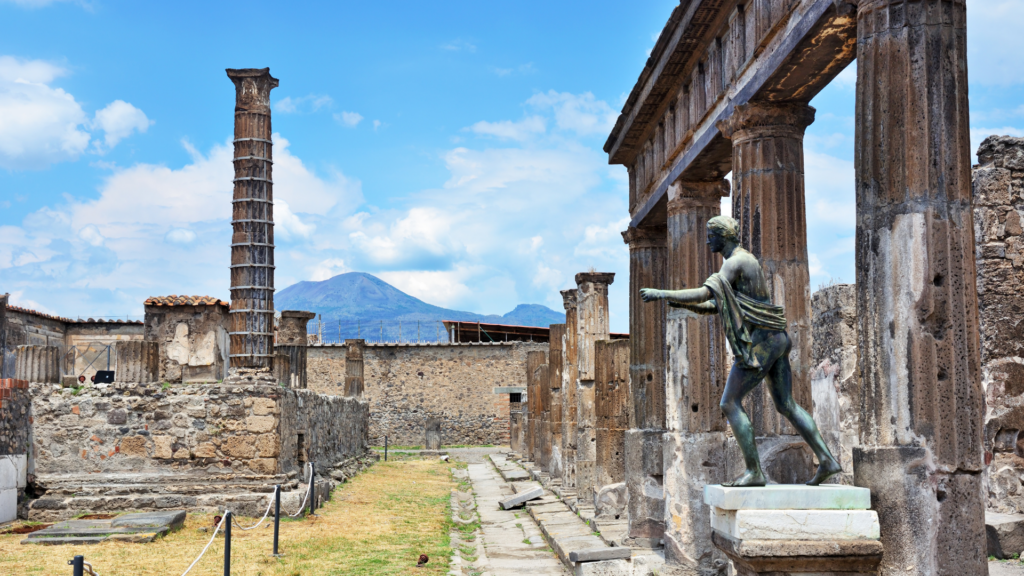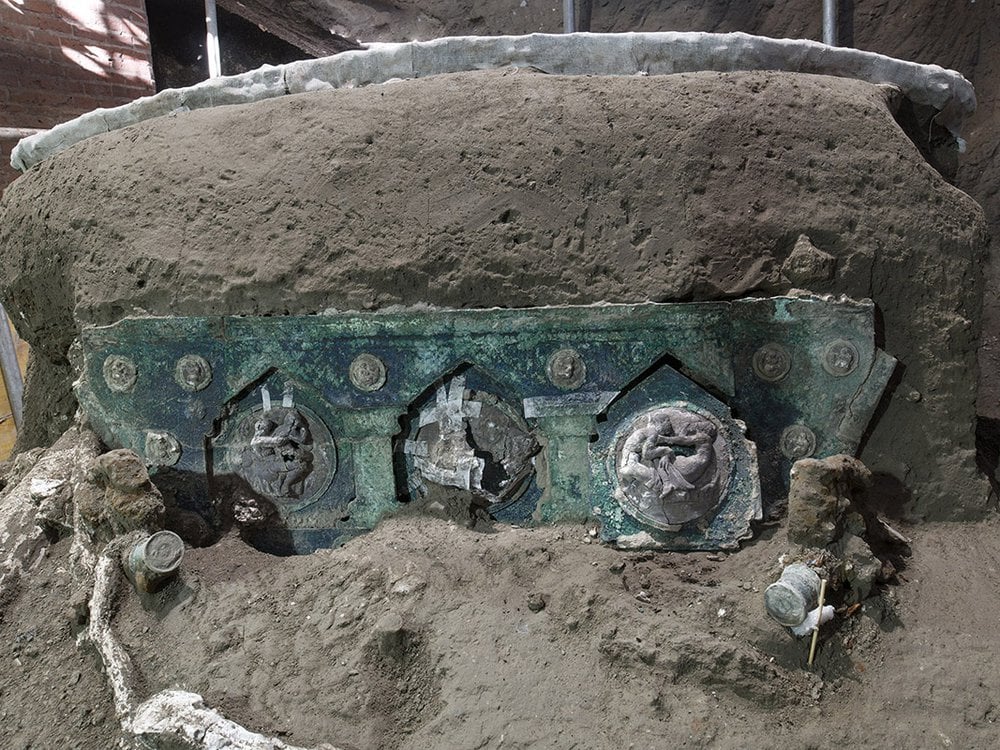“The excavations [at Pompeii] which they’re doing now are the biggest in at least 50 years,” says British School of Rome Archaeology Officer Stephen Kay.
Despite its initial discovery being as long ago as 1748, the ancient city of Pompeii is under constant excavation. Everyone knows the story of the couple embracing one another as disaster struck. Some may have even heard of the large statue of Caligula, the famed Roman emperor, or the one of Apollo, the mythological Roman god of sun. But what is it about these ancient ruins that keeps archeologists––and the world––coming back for more? Here’s your guide to what’s been going on at this historical site and why it’s important.

Believe it or not, they’ve excavated only two thirds of the buried ruins at all. Since the summer of 2020, the excavations have been yielding an influx of incredible discoveries. Among these are frescos, murals, inscriptions, and houses that lend themselves toward finally uncovering the truth about this hidden world.
A seven year restoration campaign in 2012 is what inspired all of this grand discovery. This campaign worked to maintain the historical city’s long term preservation. (This is also where they tackled much of that last third, nicknamed Regio V.) According to UNESCO, Pompeii was at risk of joining the World Heritage in Danger list. Luckily, the project continues to be a success, and has opened much of the site to the public. Since 2020, the excavations have moved to what is just outside the city walls.
The most recent finds
Among the most recent of Pompeii’s treasures is the room of the slaves, an extremely well preserved key to learning more about the daily life for slaves in the city. The room acts as a blueprint for those members of ancient history that are often neglected from primary sources. The room itself held multiple beds, including a child’s, and a chest holding fabric and wooden artifacts. Along with it, they found a chariot shaft and various other equine gear scattered throughout the room.
This was November. The very next month, they uncovered the massive four-wheeled chariot. They found the processional chariot, adorned with bronze and tin embellishments, almost completely intact. In 2018, excavators found three equine creatures in a stables. Due to its proximity, they identified the chariot as a vehicle used for ceremonial purposes to carry Roman elites.

Proudly presented along the front lies three bronze medallions, depicting male and female companions erotically embracing one another. Above that, smaller medallions house small cupids as well as a crowned female figure. The decorated chariot is the only one of its kind found in an Italian archeological site. They found plenty of agricultural chariots prior, but nothing of this caliber.
Along with this, they found intact art pieces. Take, the house that held a fresco clearly portraying the myth of Leda and the Swan, or its painting of Narcissus looking at himself in the mirror.
Why this matters
As a result of the influx in discovery, the Italian Institute of Technology (IIT) has initiated a new method for determining the truth of Pompeii. RePAIR (Reconstructing the Past: Artificial Intelligence and Robotics meet Cultural Heritage) is what they are calling it. It’s an AI-powered attempt to rebuild what pieces of Pompeii lost to looters and time.
For example, continued research and digging has led scientists to believe that the actual eruption occurred on October 24 rather than what they originally thought (two months prior on August 24).
IIT is teaming up with several collaborators to begin engineering a robot, with––should it work as anticipated––its inaugural job being to rebuild two large fragmented frescoes. Should the robot succeed, historians would finally be able to depict these paintings, particularly the second, which are entirely undecipherable. Pompeii experts stored these fragments for decades, waiting to interpret them.

Should these technologies work, the countless archeologists, historians, and observing fans would finally get the answers they’ve spent thousands of hours searching for. The provided context would give all of us a true approximation of that historic morning before Mount Vesuvius erupted.
What’s next for Pompeii is less excavation, more increasing the longevity. “Our responsibility at the moment is to conserve what we do have, rather than uncover more,” says Stephen Kay. IIT is hoping that their project RePAIR will do just that.
